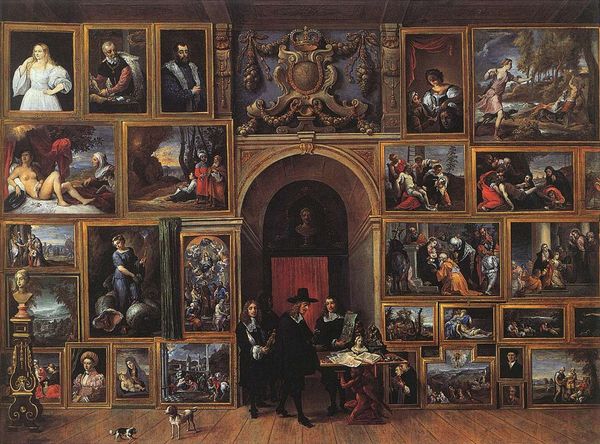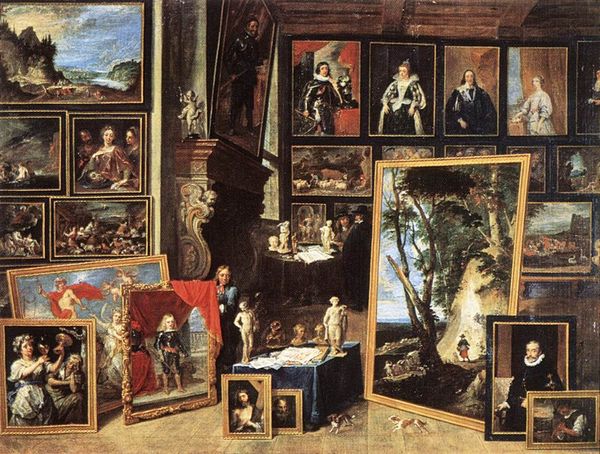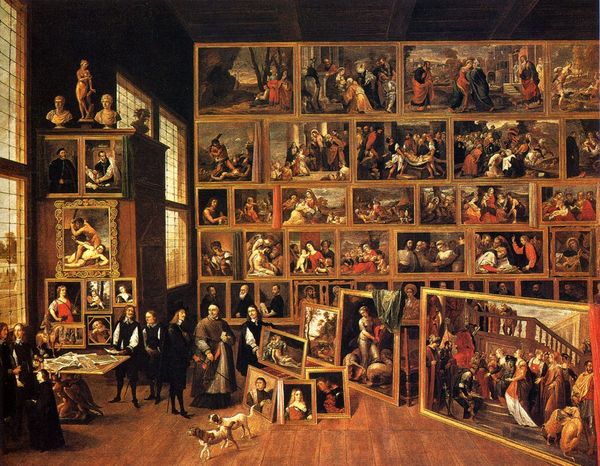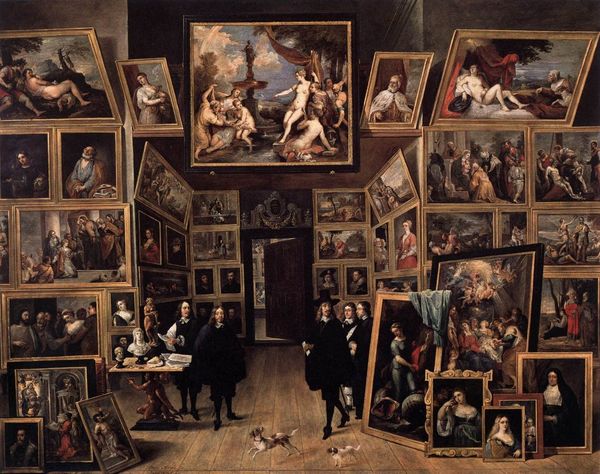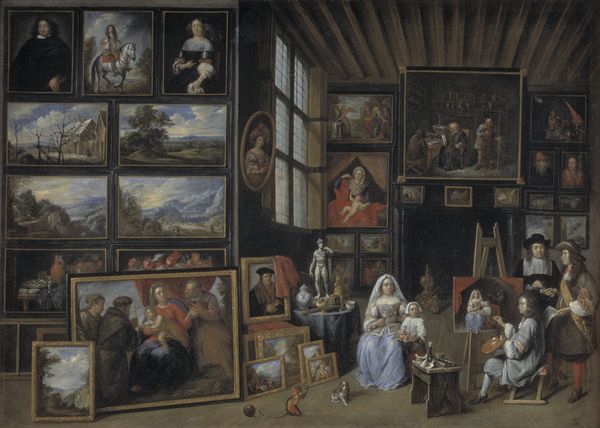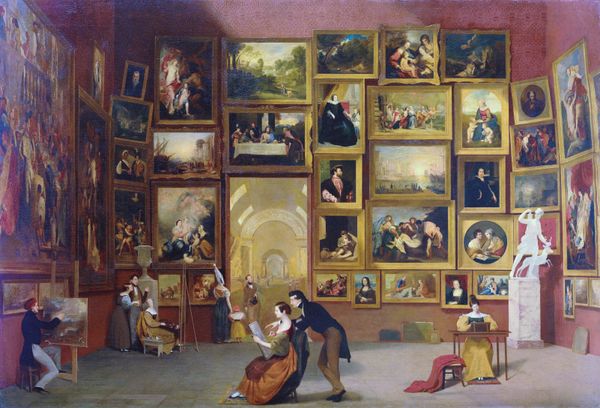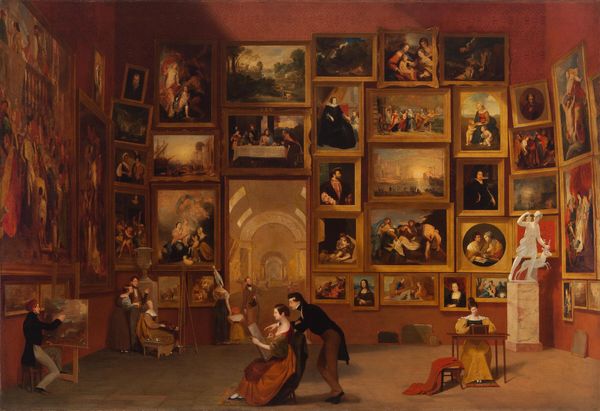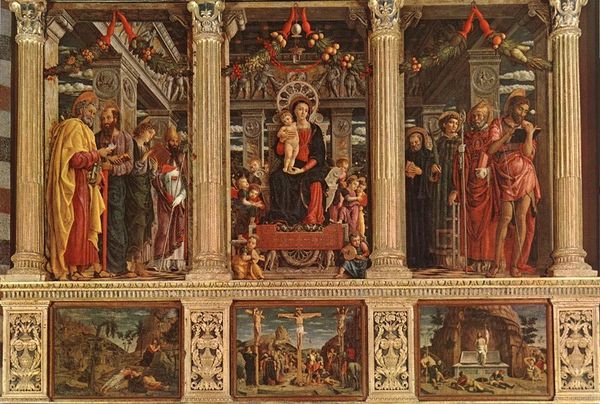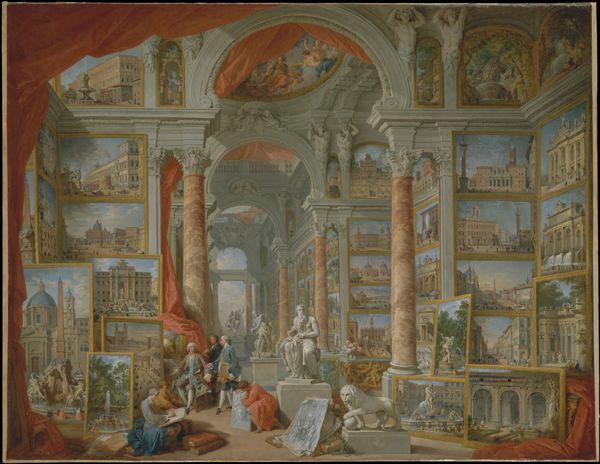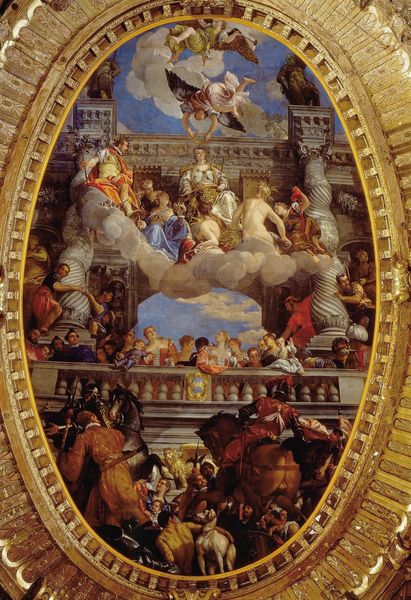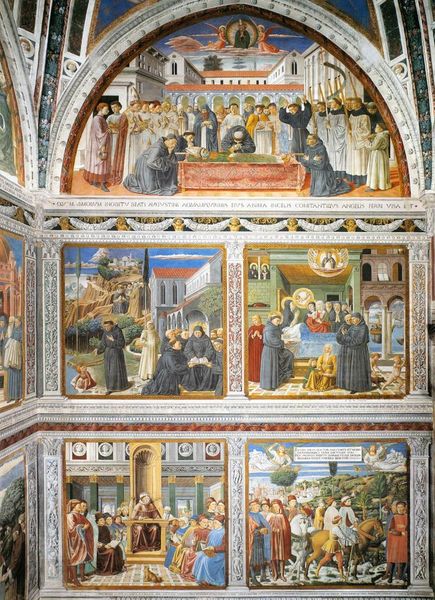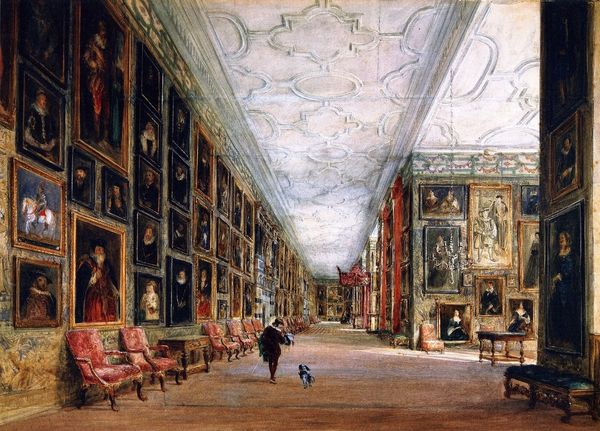
The Picture Gallery of Archduke Leopold Wilhelm 1640
0:00
0:00
davidtenierstheyounger
Schleissheim Palace, Oberschleissheim, Germany
painting, oil-paint
#
portrait
#
baroque
#
painting
#
oil-paint
#
oil painting
#
famous-people
#
genre-painting
#
history-painting
Dimensions: 128 x 96 cm
Copyright: Public domain
Editor: David Teniers the Younger painted "The Picture Gallery of Archduke Leopold Wilhelm" in 1640 using oil paint. It feels almost dizzying, looking at all these paintings within a painting. What jumps out at you in this piece? Curator: The density of imagery is absolutely the point, isn’t it? It's not just a record of the Archduke's collection, but a statement about collecting itself. Each painting acts as a symbol – what do they evoke for you, considering their placement and subject matter? Think about history paintings versus portraits versus landscapes. Editor: Well, I notice religious scenes are quite prominent. Does that have something to do with the Archduke’s position? Curator: Precisely. Religion was deeply embedded in political identity. The act of collecting and displaying these images reinforced the Archduke’s power and refined sensibilities. Think of the portraits: what messages were conveyed by possessing those specific likenesses? Editor: So, the art becomes a symbol *of* status. It’s almost like a curated performance. But does it also represent an encyclopedic urge, to capture all of human experience through art? Curator: An astute observation. These "cabinet paintings" speak to a Baroque desire to create microcosms, to contain the world within the frame, both literally and figuratively. What might this impulse say about humanity’s anxieties regarding mortality, continuity, and memory at the time? Editor: I never thought of it that way. It's more than just a gallery; it's a statement about power, memory, and the very human need to make sense of the world through art. Curator: Exactly. Each painting acts as a symbolic portal. Consider how symbols change meaning with the times but endure and accrue new associations as culture marches onward. This is what I call visual echo.
Comments
No comments
Be the first to comment and join the conversation on the ultimate creative platform.
